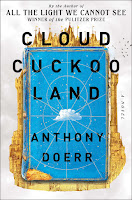Visual Thinking by Temple Grandin
Temple Grandin, professor, author, animal behaviourist, and designer of industrial equipment, was non-verbal at three years old and just learning to read at eight. Her doctor recommended she be placed in an institution but her mother chose to send her to private school instead, where her intelligence was recognized, her abilities encouraged, and lessons were tailored to her learning style. She went on to earn a bachelor's degree in psychology, followed by a masters and then a doctorate in animal science.
She's had a highly successfull carreer as an industrial designer, has written several books, and travels and speaks to audiences on the topics of animal behaviour and autism. She is currently a professor of animal sciences at Colorado State University and acts as a consultant to the livestock industry. Spending her life advocating for people on the autism spectrum and for the humane treatment of animals, in 2010 she was named one of the Time magaizine's 100 Most Influential People in the world. A movie based on her life won a Golden Globe for actress Clair Danes who played the role of Ms. Grandin.
In this book she looks at how people think and learn in different ways. What she wants us to understand is that people whose brains work the way hers does, i.e. visual thinkers, are not disabled. And she's not only talking about people on the spectrum. Many people with abilities not encouraged in our educational systems, if nurtured and given opportunities, will go on to fill essential roles in our world. For too long students who struggle with math have been held back and not given the chance to excel in their own strengths, and this affects not only the students, but all all of us. Every kind of intelligence will be needed to build a better future. Ms. Grandin shares story after story of disasters that might have been avoided had there been visual thinkers as well as linear thinkers on the design teams of the equipment involved. That emphasizes, with a sense of urgency, the importance of hearing what she has to say.
If you are a teacher, a parent, or think you may be a visual learner yourself, this book will give you good insight into how the visual mind works and how essential it is that we not neglect them, for all our sakes.











